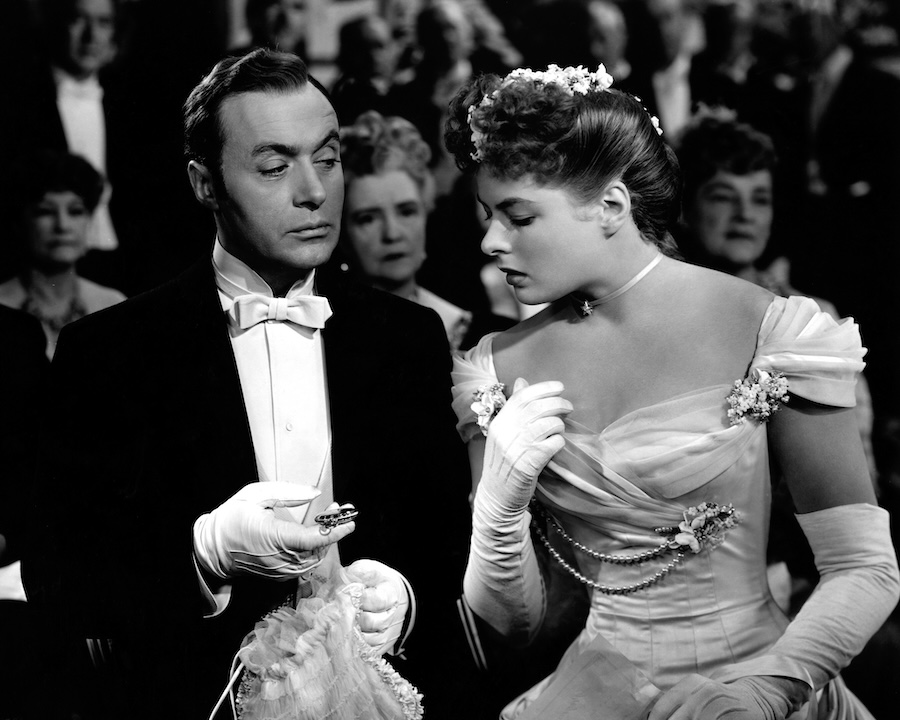
A STRANGE LOVE… BINDING A MAN AND A WOMAN DARKLY TOGETHER!

It isn’t often that the title of a movie gives rise to a new verb, but Gaslight did. When we say that someone’s being ”gaslighted”, we mean that an attempt is made to have a person believe that he or she is going crazy. It seems like the term has become more frequently used in the past few decades, but it’s been around for many years; Merriam-Webster notes that the first written example dates back to 1956. That’s 12 years after the premiere of the film that won Ingrid Bergman her first Oscar. She’s one of the reasons why Gaslight has become a must-see classic.
Famous opera singer strangled to death
When we first meet Paula, she’s 14 years old and led away by police after having found her beloved aunt, a famous opera singer, strangled to death in their home in London. She’s sent to Italy to train as a singer; years later, she meets and falls in love with the handsome Gregory Anton (Charles Boyer) and they move back to London, in fact occupying the same townhouse where Paula grew up. The top floors are sealed off, with all of her aunt’s belongings.
Paula has never really gotten over the trauma and she seems to be getting worse, forgetting things and imagining that someone’s walking around on the top floor. Eventually, she can’t even be seen in public. But it’s all her husband.
First filmed in Britain
That last part is no secret; in fact, it’s quite obvious from the start. Gaslight was originally written by Patrick Hamilton as a play, an attempt to heal his psychiatric wounds after a horrible accident that left him disfigured. A hit, the play was filmed in Britain two years later, but it is this American remake that has gotten the most attention. This version made changes to the story and they are controversial. In the original, the relationship between husband and wife was already established, but here we follow the courtship between Paula and Gregory and find it a little hard to understand why she falls for him; Gregory is manipulative and untrustworthy right from the start. We’re never given the chance to think that perhaps Paula does have mental issues and that her husband is being overly protective.
Ingrid Bergman gives one of her best performances as a woman in love who begins to believe that something really is wrong with her.
Critics who prefer the British version find the Hollywood remake a tad overwrought, but I still prefer this one. Credibility doesn’t hurt too much; after all, the first scene clearly shows us what a trauma young Paula goes through and it’s far from unimaginable that she wouldn’t be able to see through Gregory’s behavior. Bergman gives one of her best performances as a woman in love who begins to believe that something really is wrong with her; she’s deliciously matched by Boyer whose soothing words to a frail wife can barely hide his contempt.
The first filmization added a touch of humor in the shape of a very confident ex-detective; here, it’s up to May Whitty to amuse us as a curious neighbor who’s always shocked by various improprieties. This was also one of Angela Lansbury’s earliest performances; she was only 17 and very good as an arrogant cockney maid.
You may find the husband’s elaborate plan to drive his wife insane a bit ludicrous, but one of the things that makes this version superior is its tension, increased by dark, mysterious Victorian settings and effective use of close-ups in the confrontations between Gregory and Paula.
Gaslight 1944-U.S. 114 min. B/W. Directed by George Cukor. Screenply: John Van Druten, Walter Reisch, John L. Balderston. Play: Patrick Hamilton. Cinematography: Joseph Ruttenberg. Art Direction: Cedric Gibbons, William Ferrari. Cast: Charles Boyer (Gregory Anton), Ingrid Bergman (Paula Alquist Anton), Joseph Cotten (Brian Cameron), May Whitty, Angela Lansbury, Barbara Everest.
Oscars: Best Actress (Bergman), Art Direction. Golden Globe: Best Actress (Bergman).
Last word: “What worried Ingrid most was, can you imagine, she felt she looked too healthy! Personally, I thought there was no reason why a healthy girl couldn’t become a terrorized victim. It seemed even more shocking.” (Cukor, “Ingrid” by Charlotte Chandler)
